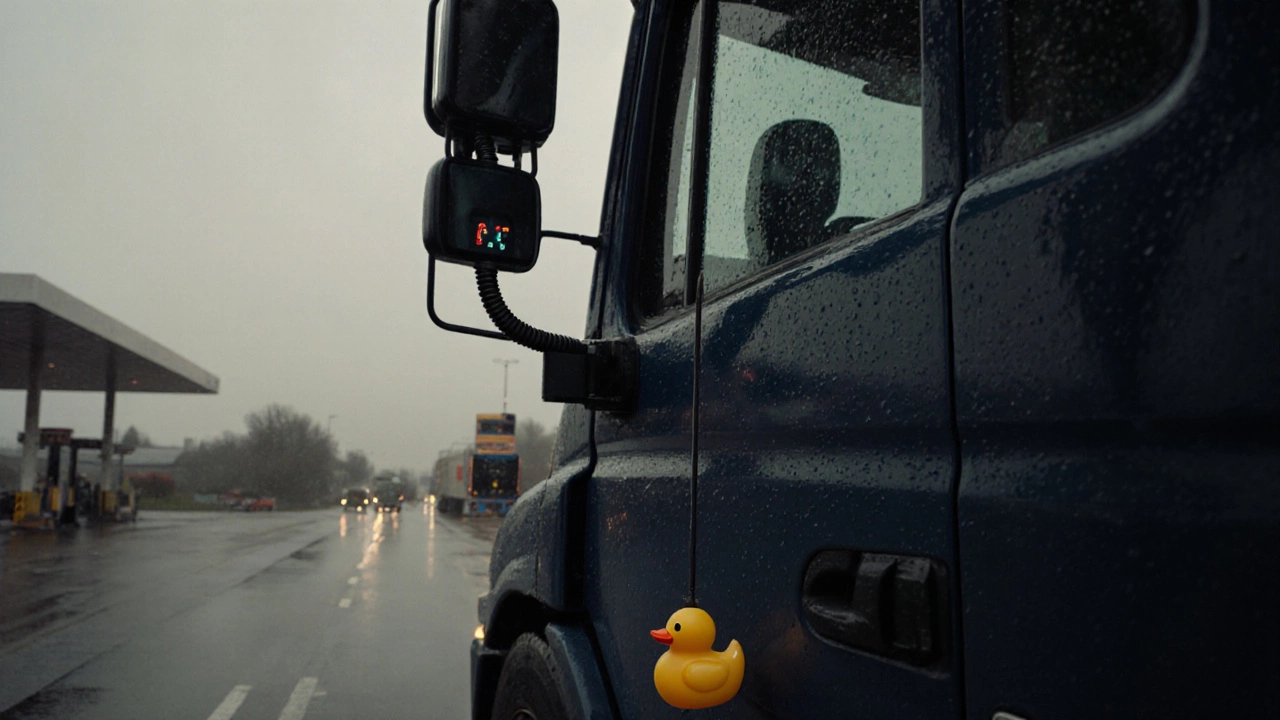CB Radio for Truckers: How It Works and Why HGV Drivers Still Use It
When you think of modern trucking, you might picture GPS, digital logs, and smartphone apps. But if you’ve ever passed a lorry on the motorway and heard a crackling voice come through the radio, you’ve heard the CB radio, a two-way radio system used by truckers to share real-time road info, warn of police, and keep drivers connected. Also known as citizens band radio, it’s been around since the 1950s—and it’s still in use today by thousands of HGV drivers across the UK. Unlike mobile phones, CB radios work without networks, data plans, or signal bars. They’re powered by the truck’s battery and transmit on 40 shared channels. That’s why, even with 5G everywhere, a trucker with a CB radio can still tell you about a 40-vehicle pile-up on the M6 before your satnav even knows it’s there.
The two-way radio, a communication tool that lets users transmit and receive voice signals over short distances without a cellular network is simple: you press the button, speak, and others on the same channel hear you. Channel 19 is the universal trucker channel in the UK, used for traffic updates, speed trap warnings, and even friendly chats. Channel 11 is for emergency calls. There’s no need to dial numbers or wait for connections—it’s instant. And because it’s not tied to your phone, it keeps you connected even in remote areas where mobile signals drop out. Many HGV drivers use it to coordinate with other drivers on long hauls, especially when carrying oversized loads or heading through narrow country roads where GPS doesn’t always help.
It’s not just about safety. A good CB radio helps build a sense of community. Drivers share info about weigh stations, fuel prices, rest areas, and even where to get a decent cup of tea on a 3 a.m. stop. Some truckers use it to warn about roadworks, bad weather, or police vans hidden behind bridges. Others use it to confirm if a bridge has a height restriction before they roll under it. And in case of breakdowns, a CB can be the difference between waiting hours for help and getting a fellow driver to stop and offer assistance.
While newer tech like satellite messaging and fleet tracking systems exist, they’re expensive and often require subscriptions. A basic CB radio costs under £50, needs no monthly fee, and works even if your truck’s battery is weak. Many professional HGV drivers keep one as a backup—and some won’t drive without it. The trucker communication, the practice of sharing real-time road information using radios, hand signals, or lights to improve safety and efficiency isn’t just about talking—it’s about survival on the road.
There’s no official rule saying you need a CB radio to drive an HGV in the UK, but if you’re serious about long-haul driving, you’ll find one in almost every cab. It’s not a gadget. It’s a tool. And like mirrors, brakes, or seatbelts, it’s something you learn to use properly before you hit the open road. Whether you’re training for your Class 1 licence or already on the road, knowing how to use a CB radio gives you an edge. You’ll hear warnings before they appear on your screen. You’ll know when to slow down before the next police van. And you’ll connect with the real, on-the-ground world of trucking—not just the digital map.
Below, you’ll find real posts from drivers and trainers who’ve used CB radios every day. From how to choose the right one, to what to say (and what not to say) on the air, to why some drivers still swear by them even with satellite systems in their cabs. These aren’t theory lessons. These are the stories from the road.
- November 20 2025
- 0 Comments
- Rowan Cavendish
What Does 'Rubber Ducky' Mean in CB Talk for HGV Drivers?
In CB radio slang, 'rubber ducky' refers to the flexible antenna commonly used on HGVs. Learn what it means, why truckers use it, and how CB talk helps drivers stay safe on the road.
- Driving Lessons (41)
- HGV Training (31)
- Driving Test Tips (30)
- Driving Test Booking (26)
- Driving Licence Renewal (23)
- Driving Theory Test (21)
- Pass Plus Course (15)
- Driving Tips (15)
- Intensive Driving Course (15)
- Driver Licensing (14)
Categories
- December 2025 (9)
- November 2025 (13)
- October 2025 (21)
- September 2025 (5)
- August 2025 (8)
- July 2025 (30)
- June 2025 (30)
- May 2025 (30)
- April 2025 (31)
- March 2025 (30)
- February 2025 (28)
- January 2025 (34)
Archives
- driving lessons
- driving test
- driving tips
- driving test tips
- intensive driving course
- HGV training
- learn to drive
- driving theory test
- driver training
- driving test booking
- pass driving test
- HGV driving
- road safety
- driving license renewal
- Virginia driving test
- learner drivers
- safe driving
- Virginia driver's license
- driving license
- learning to drive

